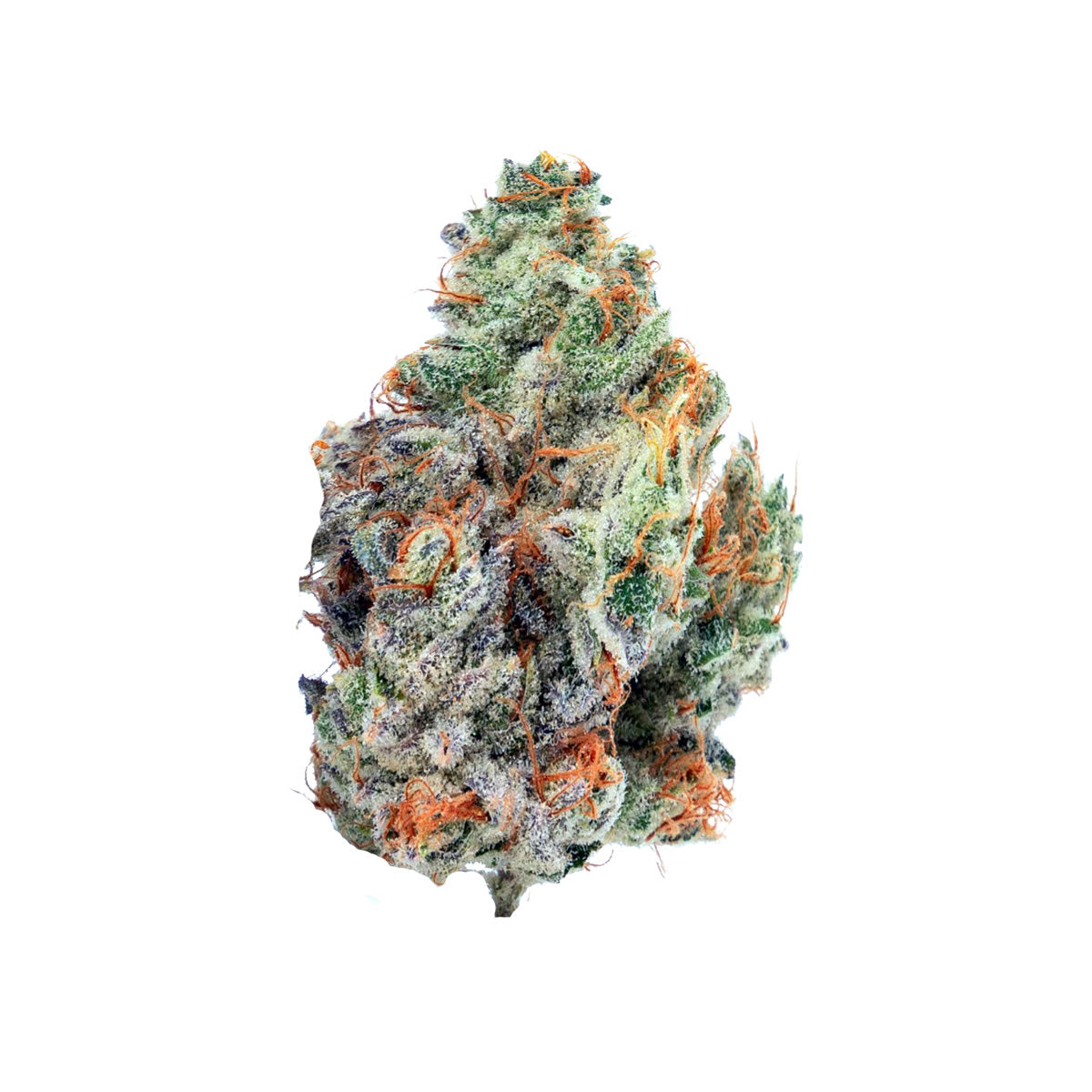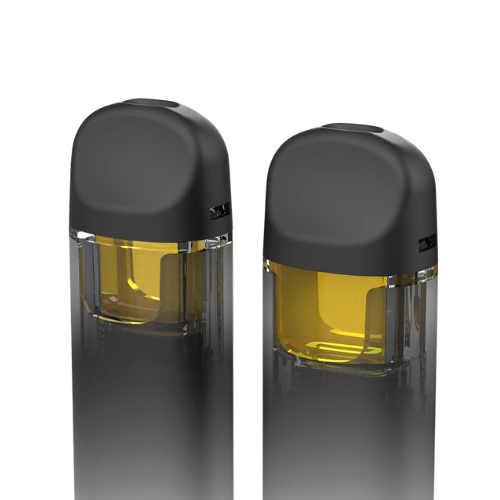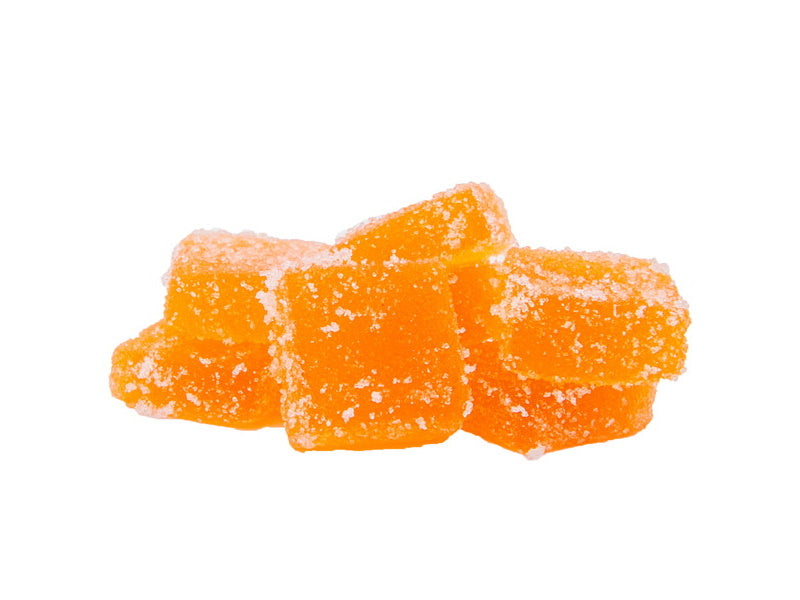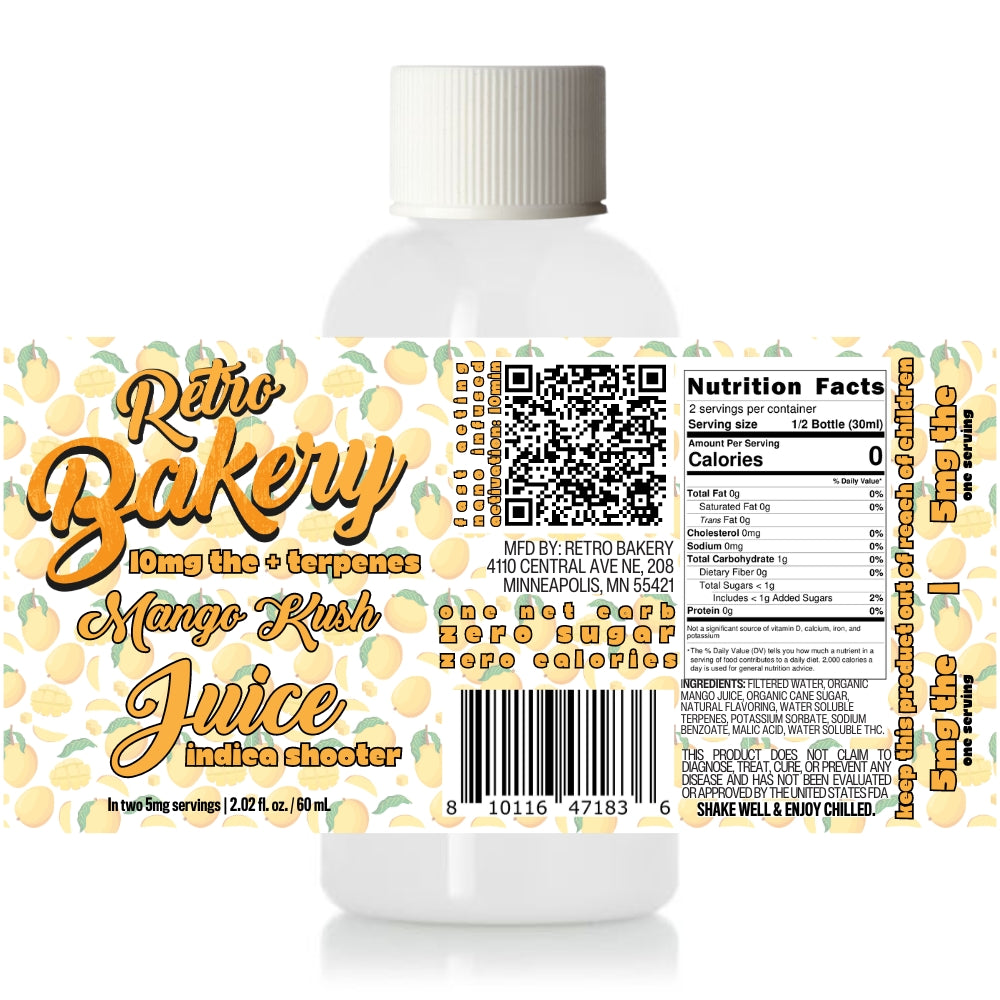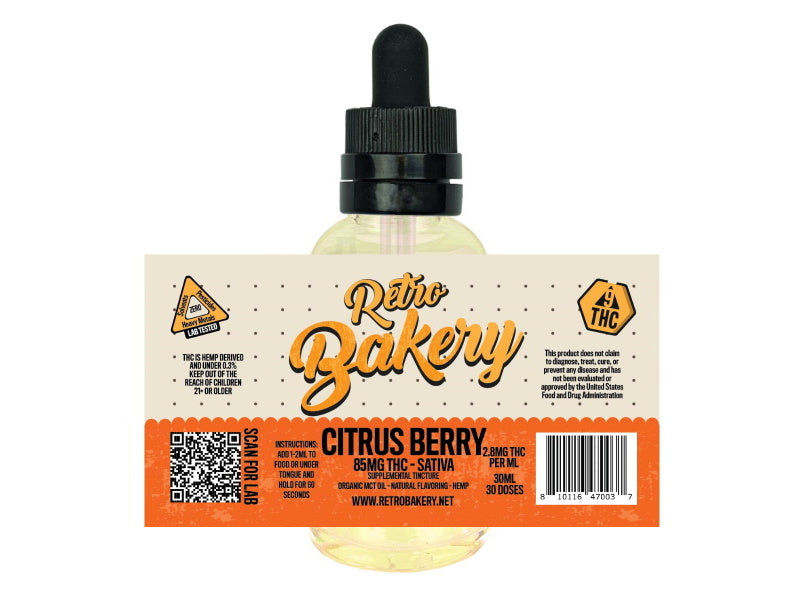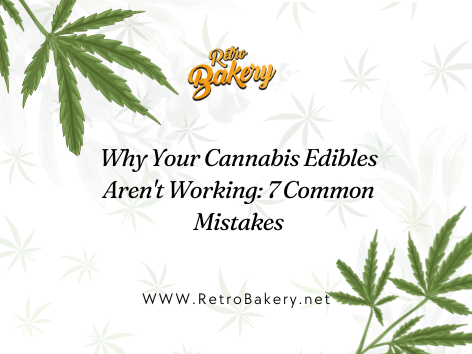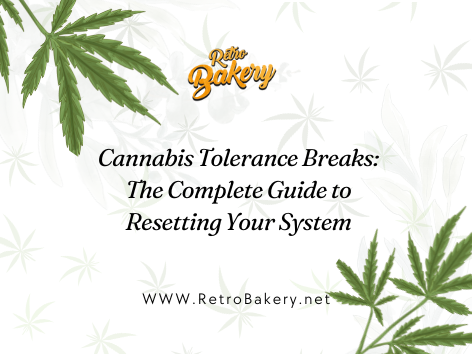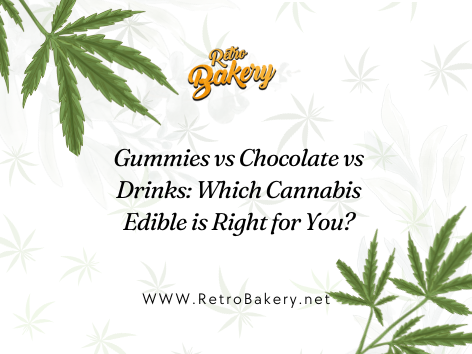Comparing THC Bioavailability: Why Different Edibles Kick In at Different Speeds
Key Takeaways
-
Traditional edibles have only 4-12% bioavailability, while sublingual methods can reach 40-50%, explaining significant differences in onset times
-
Nano-emulsified products like drinks and fast-acting gummies can work 3-4 times faster than conventional edibles due to enhanced particle absorption
-
Your consumption method matters: digestive THC travels through the liver first (first-pass metabolism), while sublingual delivery goes directly to the bloodstream
-
Personal factors, including metabolism, meal timing, and fat content dramatically influence how quickly you'll feel effects
-
The fastest onset options (10-30 minutes): nano-emulsified beverages, tinctures, and sublingual products
Ever wondered why that cannabis beverage kicked in after just 15 minutes, while your friend's gummy took over an hour? You're not imagining things, the science of THC absorption explains exactly why different cannabis edibles affect you at dramatically different speeds.
The difference isn't just about product type or potency. It's about bioavailability, how efficiently THC actually makes it into your bloodstream, where it can produce effects. When manufacturers claim their product "hits faster," they're actually referencing the science of how THC particles are processed and absorbed by your body.
Understanding these differences can transform your experience with edibles, helping you select the right product for your needs, whether that's quick relief, longer duration, or predictable timing. Let's pull back the curtain on why some edibles take the scenic route to your bloodstream while others take the express lane.
Understanding THC Bioavailability: What Does It Mean?
Defining Bioavailability in the Cannabis Context
Bioavailability sounds technical, but the concept is straightforward: it's the percentage of consumed THC that actually makes it into your bloodstream to produce effects. Think of it as delivery efficiency, if you consume 10mg of THC in an edible with 10% bioavailability, only about 1mg actually reaches circulation to affect your system.
This explains why the labeled THC content doesn't tell the whole story about potency. Two 10mg products with different bioavailability rates will produce noticeably different experiences.
Why Bioavailability Matters for Edibles
The bioavailability challenge is particularly stark for traditional edibles. Research shows that conventional edibles have a bioavailability of approximately 4% to 12%, meaning up to 96% of the THC you consume never reaches your bloodstream. Compare this to inhalation methods, which provide approximately 25% bioavailability (ranging from 2% to 56%), and you can see why dosing edibles has historically been challenging.
This issue isn't just academic, it explains common user experiences:
-
Why it's easier to over-consume edibles (slow onset leads to impatience and additional dosing)
-
Why effects can feel more intense and last longer (liver metabolism creates 11-hydroxy-THC, a more potent compound)
-
Why consistent experiences are harder to achieve (varying absorption rates cause unpredictable effects)
Understanding bioavailability helps you make smarter choices about consumption methods, timing, and dosage. For example, if you need relief that arrives quickly and consistently, traditional gummies might not be your best option, but a nano-emulsified drink might be perfect.
The Science of Digestion: How Traditional Edibles Work
The Digestive Pathway of THC
When you eat a traditional cannabis edible like a brownie or gummy, your body processes it through the standard digestive pathway:
-
Mouth: Minimal absorption occurs here with standard edibles
-
Esophagus and stomach: The edible breaks down, but minimal THC absorption happens
-
Small intestine: THC is extracted and absorbed into the bloodstream
-
Liver: The compound undergoes "first-pass metabolism," converting much of the THC to 11-hydroxy-THC
-
Bloodstream: The remaining THC and its metabolites circulate to the brain and body
This circuitous route explains why traditional edibles typically take 30-120 minutes to produce effects. Research confirms that ingested cannabis typically manifests effects 30-60 minutes after consumption, with peak effects occurring 1.5-3 hours after ingestion.
The first-pass metabolism in the liver is particularly significant. Not only does it reduce bioavailability substantially, but it also creates 11-hydroxy-THC, which crosses the blood-brain barrier more readily than THC itself. This explains why edible effects often feel more intense and longer-lasting than inhaled cannabis, despite lower bioavailability.
Factors Unique to Digestive Absorption
Several elements affect how efficiently your digestive system processes THC:
-
Food content: Consuming edibles with fatty foods can enhance absorption since cannabinoids bind to fats. A high-fat meal can increase bioavailability significantly, research shows CBD bioavailability jumps from approximately 6% when fasting to 36.5-57.3% in a fed state, and THC follows similar patterns.
-
Digestive efficiency: Individual differences in enzyme production, gut transit time, and metabolic rate significantly impact when and how strongly you'll feel effects.
-
Liver function: Individual variations in liver enzymes (particularly CYP2C9) affect how quickly your body processes THC and how much 11-hydroxy-THC is produced.
This digestive maze explains why traditional edibles have been notoriously unpredictable. The good news? Modern cannabis science has developed solutions to this bioavailability problem.
Fast-Acting Innovations: Nano Emulsion and Beyond
What Is Nano Emulsion Cannabis?
Nano emulsion technology represents one of the most significant breakthroughs in edible cannabis science. The process breaks down THC particles to nano-size (typically under 100 nanometers), dramatically smaller than traditional edible particles. These tiny particles are then encapsulated in a water-friendly outer layer.
The result? Nanoemulsion can increase cannabinoid absorption rates to over 90%, compared to the meager 4-12% of traditional edibles. This isn't marginal improvement, it's revolutionary.
Nano-emulsified products typically feature:
-
Faster onset (10-30 minutes versus 30-120 minutes)
-
More consistent effects (less variability between users and sessions)
-
Higher efficiency (potentially allowing for lower labeled doses with similar effects)
-
Reduced "edible anxiety" (knowing effects will arrive predictably reduces the temptation to consume more while waiting)
If you've tried fast-acting vegan THC gummies with nano encapsulation, you've experienced this technology firsthand. The rapid onset isn't marketing hype, it's legitimate food science at work.
How Do Nano Edibles and Drinks Work?
The magic of nano-emulsified products lies in their water compatibility and tiny particle size:
-
Immediate mucous membrane absorption: Nano particles can begin absorbing through the mouth, esophagus, and stomach linings immediately
-
Bypassing first-pass metabolism: Some absorption occurs before liver processing begins
-
Enhanced intestinal uptake: Smaller particles are absorbed more efficiently in the small intestine
-
Water compatibility: The hydrophilic coating allows particles to mix easily with bodily fluids, enhancing absorption
This explains why cannabis beverages with nano-emulsification can produce effects within 10 to 30 minutes, compared to the 30 minutes to 2 hours for traditional edibles. The technology is particularly effective in drinks, as liquid formulations maximize the surface area of these nano particles.
Products like Retro Bakery's 10mg Lemonade Shots take advantage of this technology, offering precise dosing with predictable onset times, perfect for situations where timing matters.
Sublingual vs. Digestive: THC Tinctures, Lozenges, and Quick-Dissolving Edibles
The Sublingual Route Explained
Sublingual (under-the-tongue) delivery offers another fast track to the bloodstream that largely bypasses the digestive system:
-
Product is placed under the tongue, where it dissolves
-
THC absorbs directly through the thin mucous membranes
-
Absorbed compounds enter the sublingual blood vessels
-
THC enters circulation, bypassing first-pass metabolism in the liver
This direct route makes sublingual products significantly more efficient. Research shows sublingual THC administration offers approximately 40% to 50% bioavailability, dramatically higher than traditional edibles' 4-12%.
Products utilizing sublingual absorption include:
-
Tinctures and oils (held under the tongue before swallowing)
-
Dissolvable strips and tablets
-
Lozenges and hard candies (when sucked, not chewed and swallowed)
-
Some quick-melt gummies designed for partial sublingual absorption
The key advantage isn't just speed, it's efficiency. With bioavailability potentially 4-10 times higher than traditional edibles, sublingual products often allow for lower total THC content while maintaining efficacy.
For more information on how tinctures specifically work, check out Your Guide to Hemp Tinctures: Legality, Benefits, and the Buzz.
When (and Why) Sublingual Hits Faster
The sublingual route typically produces effects within 15-45 minutes, faster than traditional edibles but slightly slower than nano-emulsified drinks. The advantages include:
-
Consistency: Less variation based on stomach contents or digestive factors
-
Efficiency: Higher percentage of the dose reaches the bloodstream
-
Discreetness: No vape clouds or smoke, just a quick drop or dissolving product
To maximize sublingual absorption:
-
Hold the product under your tongue for at least 60-90 seconds
-
Avoid eating, drinking, or smoking immediately after application
-
Try not to swallow the product immediately (some will inevitably be swallowed)
For best results with tinctures, place the drops under your tongue and hold them there without swallowing, this ensures maximum mucosal absorption before any remainder enters the digestive tract.
Key Factors Affecting Onset and Absorption Rates
Personal Physiology: Metabolism, Body Composition, and Tolerance
Your individual biology plays a crucial role in how quickly you'll feel effects:
-
Metabolic rate: Those with faster metabolisms typically process THC more quickly
-
Body composition: THC is fat-soluble; those with higher body fat percentages may experience different distribution patterns
-
Enzyme variations: Genetic differences in liver enzymes affect processing speed and efficiency
-
Tolerance level: Regular consumers often metabolize THC differently than occasional users
This explains why your friend might feel effects from the same product sooner (or later) than you do. Your unique physiological makeup creates your personal "onset fingerprint."
Meal Timing and Diet
What and when you eat dramatically impacts edible absorption:
|
Consumption Scenario |
Effect on Onset |
Effect on Intensity |
Bioavailability Impact |
|
Empty stomach |
Faster onset |
Potentially more intense |
Lower overall absorption |
|
After light meal |
Moderate onset |
Balanced effects |
Moderate absorption |
|
With/after fatty meal |
Slower onset |
Potentially stronger, longer |
Significantly higher absorption |
Research confirms that consuming edibles with fatty foods enhances absorption since cannabinoids bind to fats. While an empty stomach might speed initial onset, the total amount absorbed is typically lower than when consumed with fats. This explains why the common advice to "take edibles with peanut butter" actually has scientific merit.
Dose, Potency, and Cannabinoid Companions
Product-specific factors also influence how quickly and strongly effects manifest:
-
Dose size: Higher doses may produce noticeable effects sooner
-
Cannabinoid profile: Full-spectrum products with multiple cannabinoids typically produce different onset patterns than isolated THC
-
Terpene content: Certain terpenes may accelerate or enhance absorption
-
THC:CBD ratio: CBD can modify how THC is metabolized, potentially affecting onset timing
For beginners especially, understanding these interactions is crucial. If you're new to edibles, check out What is the recommended dosage for beginners trying THC edibles? for guidance on starting doses.
Product Formulation and Ingredient Technology
Beyond nano-emulsion, manufacturers employ various technologies to enhance absorption:
-
Liposomal delivery: Encapsulating THC in lipid layers to improve absorption
-
Specialized emulsifiers: Ingredients that help oil-based THC mix with water-based bodily fluids
-
Terpene additions: Some terpenes may enhance absorption or blood-brain barrier penetration
-
Enzyme inhibitors: Ingredients that slow liver metabolism of THC, potentially extending effects
These technological approaches explain why some products in the same category (e.g., two different brands of gummies) might have noticeably different onset profiles.
Comparing Common Edible Types: From Slowest to Fastest-Acting
Onset and Bioavailability Comparison
Here's how common cannabis product types compare for onset time and bioavailability:
|
Product Type |
Typical Onset Time |
Bioavailability |
Best For |
|
Traditional baked goods |
45-120 minutes |
4-12% |
Long-lasting effects, gradual onset |
|
Standard gummies |
30-90 minutes |
6-20% |
Predictable dosing, extended relief |
|
Chocolates |
30-90 minutes |
6-20% |
Extended effects, potentially enhanced absorption due to fat content |
|
Nano-emulsified gummies |
15-45 minutes |
25-50% |
Quicker onset with familiar format |
|
Oil-based tinctures (swallowed) |
30-90 minutes |
6-20% |
Flexible dosing, easy titration |
|
Sublingual tinctures (held under tongue) |
15-45 minutes |
40-50% |
Rapid onset, higher efficiency |
|
Nano-emulsified beverages |
10-30 minutes |
Up to 90% |
Fastest onset, social consumption, precise dosing |
This comparison illustrates why product selection should match your timing needs. Want effects during a 2-hour movie? A nano drink 15 minutes before might be perfect. Need relief throughout the night? A traditional edible might be the better choice.
Practical Implications: When to Choose Which Type
Different consumption scenarios call for different product types:
For social gatherings or when precise timing matters:
-
Nano-emulsified beverages
-
Sublingual tinctures
-
Fast-acting gummies
For extended relief without redosing:
-
Traditional edibles
-
Chocolates
-
Standard gummies
For discretion and portability:
-
Tinctures
-
Gummies (both standard and fast-acting)
-
Tablets or mints
For sleep support:
-
Traditional edibles (longer duration)
-
Indica-leaning products with sedative terpenes
By matching the product type to your specific needs, you can optimize both the timing and quality of your experience.
FAQs: Busting Myths About Edible Absorption
Does chocolate always hit harder?
What People Ask: Do chocolate edibles really hit harder than gummies?
While chocolate edibles don't necessarily "hit harder" gram-for-gram, there is scientific evidence suggesting chocolate may enhance THC absorption. Cocoa contains compounds that may inhibit certain enzymes involved in THC metabolism, potentially allowing more THC to reach circulation.
Additionally, chocolate's fat content can increase THC bioavailability. For a deeper dive into this topic, check out Why Do Chocolate Edibles Hit Harder?
If I don't feel it right away, should I take more?
What People Ask: If I don't feel effects after 30 minutes, is it safe to take another dose?
This is perhaps the most common pitfall with cannabis edibles. The answer is no, wait the full recommended time before considering additional dosing.
Traditional edibles can take up to 2 hours to produce noticeable effects, particularly with certain digestive conditions or when taken with food. Even fast-acting products can occasionally take longer than expected due to individual physiological factors.
The golden rule: "You can always take more, but you can't take less." When in doubt, wait it out, at least 2 hours for traditional edibles and 1 hour for fast-acting products.
Do onsets always match the packaging claims?
What People Ask: Are manufacturer claims about onset times accurate?
Onset time claims should be considered guidelines rather than guarantees. While reputable manufacturers base claims on testing and research, individual experiences vary significantly based on:
-
Your physiology and metabolism
-
What you've eaten recently
-
Your cannabis tolerance
-
How accurately you've measured your dose
Fast-onset claims (like "effects in 15 minutes") are typically more reliable with nano-emulsified and sublingual products than with traditional edibles, which have more variables affecting absorption.
When trying a new product, always allow extra time beyond the claimed onset period before assuming it's ineffective.
Conclusion
The science of THC bioavailability explains why different cannabis products affect you at dramatically different speeds. It's not marketing hype, it's legitimate biochemistry that explains why that beverage kicked in after 15 minutes while your friend's gummy took over an hour.
Traditional edibles offer lower bioavailability (4-12%) but longer-lasting effects due to liver metabolism. Sublingual products provide much higher bioavailability (40-50%) with faster onset. Nano-emulsified products take efficiency even further, with potential bioavailability up to 90% and the fastest onset times in the edible category.
Your personal factors, metabolism, what you've eaten, body composition, further modify these baseline differences, creating your unique experience with each product type.
Understanding these differences empowers you to choose products that align with your specific needs, whether that's rapid onset for acute situations or extended duration for longer relief. Browse Retro Bakery's product collections to explore options across the bioavailability spectrum, from fast-acting beverages to traditional edibles.
Have questions about which product might have the right onset profile for your needs? Contact us for personalized recommendations based on your timing preferences and experience level.


